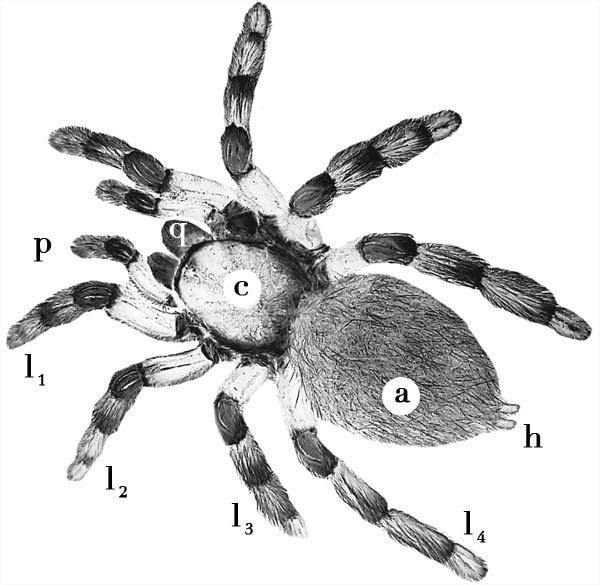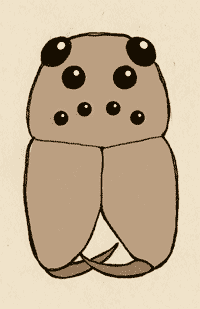THE 10 MAIN SPECIES IN DANGER OF EXTINCTION - # 1 THE BLACK WIDOW PART I
Hello friends of steemit, you want to tell them a little story before talking about this interesting publication, it turns out that since childhood I was always told about the black widow, who was a woman who became a spider because she was very bad , always tried to harm other people and it was so much that all their hatred turned into their poison, now going to talk about this myth told by my grandmother, I will tell you why I wanted to make this post, nowadays black widow is considered one of the most prospensa species to be in danger of extinction, that is why I wanted to make this series called, the 10 species that are most endangered are to be extinguished, without more than talking we are going to the main widow black.

Pinture Credits :commons.wikimedia
Spiders (Araneae) or black widows are the largest order of the Arachnida class, distantly related to other groups of arthropods, such as insects, with which they should not be confused. The Araneae order is the seventh in total diversity of species with respect to the rest of the diversity of organisms. The group is abundantly represented on all continents, except Antarctica. All are predators, usually solitary, of small animals. They have poisonous glands in the chelicerae, with which they paralyze their prey. They produce silk (see Spider silk), with which they weave spider webs or cobwebs, which they use to build hunting nets, upholster shelters and even get carried away by the wind. To date, more than 46,500 species of spiders have been described, and 110 families have been collected by taxonomists; however, confusion remains within the scientific community, as evidenced by the approximately 20 classifications that have been proposed since 1900. Only some groups are truly dangerous to humans. The specialty that deals with spiders and the rest of arachnids is called arachnology. There are people who suffer from arachnophobia, that is, fear of spiders.
Characteristics
The anatomy of spiders coincides broadly with that of other arachnids, that is, with the body divided into two regions or tagmas, prosoma (or cephalothorax) and opisthosoma (or abdomen) and the same number and type of appendages, ie , a pair of chelicerae, a pair of pedipalps and four pairs of locomotor legs.
Prosoma :
The six pairs of appendages mentioned above are inserted into the prosoma, as well as the simple eyes; On the ventral side the mouth opens.
The chelicerae present a single joint, between the base, very bulky, and a distal nail usually small (at the end), and usually carry poisonous glands. When not used, the nail is more or less protected within a groove of the basal tissue.
The pedipalps are similar to the legs, but do not rest on the ground, but they are raised in front of the body. The males of many species use the pedipalps to woo the females, in which case they may be large or showy, and also as a copulatory device, which introduces a bag of sperm, the spermatophore, into the body of the female.
The locomotor legs are inserted below the prosoma and are made up of seven pieces, which are, from the proximal end (base) to the distal end: coxa, trochanter, femur, patella or knee, tibia, metatarsal and tarsus.

Pinture Credits:commons.wikimedia
Opistosoma
The opisthosoma contains in its posterior end sericgenous glands (silk producers) that open to the outside by small mamelons called rows. In the inferior and anterior part of the opisthosoma (or abdomen) the epigino (genital pore) is opened, the lungs in book, respiratory cavities with laminar internal folds that, depending on the cases, are two or four, and / or the stigmas of the system tracheal.
Internal anatomy
Spiders are predatory animals that paralyze their prey with the venom of their chelicerae. Most spiders inject digestive enzymes into the prey, performing external digestion, at least partially. Many chew the prey partially with teeth that are part of the basal tissue of the chelicerae. There are also commonly located "hairs" that allow in many cases to effectively filter the food, separating the solid particles from the liquid.
At the beginning of the digestive tract, a pharynx or stomach of suction function is located. From the middle of the prosoma and until the end of the opisthosoma, the midgut is extended, usually with diverticula, which in some cases extend even to the legs. Chemical digestion is only partially carried out in the lumen of the intestine, particles being phagocytosed whose enzymatic digestion is completed intracellularly.
The circulatory system is open type, as in all arthropods, with a dorsal tubular heart located in the anterior dorsal part of the opisthosoma, whose surface is marked by a cardiac groove. It is possible in some cases to perceive their beats, from 30 to 100 per minute, more numerous in the smaller spiders. The hemolymph is pumped to the heart from a pericardial cavity and projected out of it with energy. The high pressure has been interpreted as a sign of a hydraulic function, which could play a role in the movement of the legs. The pressure doubles during the moult. Hemolymph, as is normal in arthropods, lacks pigment cells, but not transporting pigments, which are in this case hemocyanins, bluish in color. The extent of the vessels is limited, and affects, as is normal in open systems, especially to the respiratory organs.
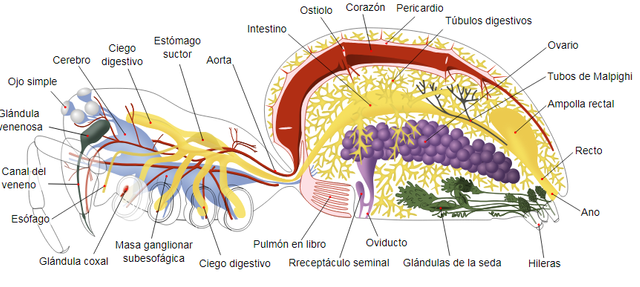
Pinture Credits :commons.wikimedia
Breathing is performed by internalized organs, normal in animals of aerial life, which in this case are book or philotracheal lungs (sometimes called tracheae in book), one or two pairs that open in the median and ventral part of the anterior opisthosoma . They have a folded structure, which multiplies the exchange surface, and through them the hemolymph circulates through vessels. Many spiders also have a tracheal system that is not homologous to that of insects.
The excretion is carried out by not very developed coxal glands and by tubes that end in the intestine analogous to the Malpighi tubes of the insects.
Sensory equipment
Like the rest of the quelicerados, they lack antennas, and use the pedipalps as tactile and olfactory organs. The sight of the spiders is generally very poor, despite having up to four pairs of simple eyes called ocelli, which in some families are reduced to three pairs or less. The placement, size and color of the eyes are diagnostic characters of the families, that is, they allow to distinguish one from the other. In a few cases the vision is effective, and in the saltícidos (Salticidae) is the best of all terrestrial invertebrates.
Silk
All spider species produce silk, a material composed of complex proteins, which they use for many different functions: hunting prey and wrapping it in it; as an adhesive for other tunnel construction materials, trapdoors, etc; as areas of locomotion, as well as many other utilities. Certain species of spiders create a long thread that serves as a sail to be dragged by the wind. The wind guides them either to hunt their prey or to go in a certain direction. This phenomenon is known as arachnid flight. At the posterior end of the abdomen are the silk secretory glands called rows, which produce a fluid that solidifies on contact with air (the fluid is a concentrated solution of proteins, whose structure is transformed just before leaving, becoming a insoluble form that quickly dehydrates and forms silk fiber).
Feeding
Spiders are predators. They feed from singular preys that they capture activetly. Some produce a network (web) in which the prey fall by accident, entangling and sticking in it. In this case, the spider, which is lying in wait with its legs extended over the net, captures the vibrations and approaches its prey. Other spiders hunt on the spot, in the ground or on the vegetation, detecting their prey by the vibrations of the substrate or with their eyes, as do the licosids and the saltícidos. The spiders do not tear and swallow their prey, as do, for example, their relatives the soli-feculents, but they inject venom with their chelicerae while holding them with their legs and their pedipalps. Once paralyzed by the poison injected digestive juices, which produce an external digestion of the animal within their own teguments, then sipping the resulting porridge. That is why spiders are observed to remain motionless for a long time while holding their immobile prey.
Predators and defense
Spiders have many predators in the ecosystem such as different species of birds, mammals, toads, lizards and other predatory arthropods such as red wasps, centipedes, scorpions, mantises, solifugues. When they feel threatened, they raise their two front legs and their queliceros. When the threat approaches, the spider bites its predator with its chelicerae using the most potent poison, since the spider's venom is composed of two parts, one to be able to paralyze the prey on which they feed, and the other against its predators only as a defense. Other defensive mechanisms are the cobwebs and shelters that they build as a defense and to be able to capture their prey.
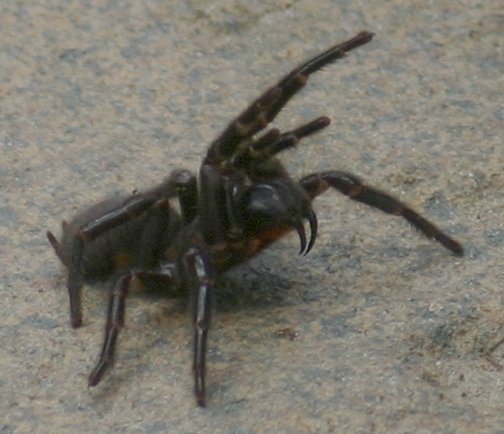
Pinture Credits :commons.wikimedia
Reproduction and development
Being solitary hunters, they tend to consider a prey anything that moves and has the appropriate size. The males, generally smaller than the females, actively seek them, courting them with elaborate "dances" in which the rhythmic movement of the pedipalps can play an important role, in an attempt not to be devoured by the females. The ritual may include the gift by the male to the female of a prey wrapped in silk, which in some species has evolved to be only a decoy, the silk bag, devoid of content. When he gets the approach, the male inserts a spermatophore into the female's sexual tracks using his pedipalps, which act as copulatory organs. In spite of the ritualization, it is common that after the copulation the female devours the male.
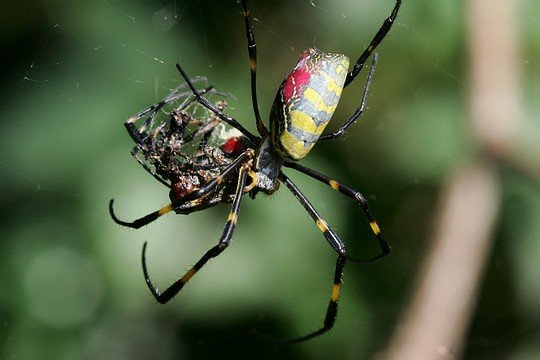
Pinture Credits :commons.wikimedia
Ecology
As predators, spiders usually occupy a terminal position in trophic chains. They play a very important role as predators: they are the largest consumers of insects on the planet and contribute decisively to controlling their numbers.
They are found in all climates, even cold, unfavorable for poikilothermic animals, and are among the living beings registered at higher altitudes. They abound equally in dry and humid environments and some carry an aquatic existence, such as the Eurasian Argyroneta aquatica, which fills its underwater nest with an air bubble, or the Australian Megadolomedes australianus.
Behavior
The investigation of the behavior (Ethology) of the spiders is a field of great wealth. Although their learning capacity is modest, as is the rule in arthropods, they display a great variety and complexity of instinctive (inherited) behaviors, especially in relation to courtship and mating and parental care. It is also remarkable the precision with which some manufacture their hunting network.
The parental care, the active attention to the progeny, has been observed in different spiders. The licósidos carry the eggs, enclosed or not in a cocoon, and they take care of the juvenile individuals until these reach the sufficient development to capture prey. Some cases of maternal suicide are known, in which young spiders obtain the first food from their mother's body.
Some spiders, such as the cosmopolitan genus Argyrodes (family Theridiidae), are kleptoparasites, who steal their prey from other spiders, keeping a close watch on their webs. Cleptoparasitism has been observed in half a dozen families.
Species of the genus Mycaria (family Gnaphosidae) practice the mimicry of the ants, not only in their appearance, but also in their attitudes, raising the front legs to the position of antennas. So does Sunpunna picta, which imitates the movements of a wasp.
Apparently, when the spiders fight between them, if they receive a sting in a limb, they are amputated to prevent the poison from reaching the rest of the body.
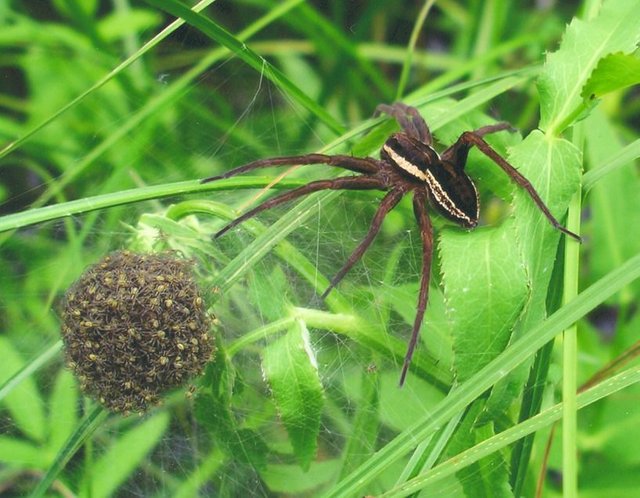
Pinture Credits :commons.wikimedia
Poisoning
_All spiders, except those of the Uloboridae family, are poisonous. In general, spiders that hunt actively are more poisonous than those that capture their prey by stalking or by means of a net. The product that the chelicerae inject tends to satisfy two purposes: first, the external digestion of the prey, so that the spider absorbs the resulting porridge; second, the immobilization of the dams. In addition, some migalomorphic spiders (American tarantulas) carry urticating beams, which produce irritation when touched and can severely damage delicate areas, such as the eyes.
As a general rule, spiders are too small to pass through human skin with their chelicerae. Of those that can do so, most produce shallow and local effects, but a few species can produce severe systemic poisoning or localized but extensive necrosis (tissue death)._
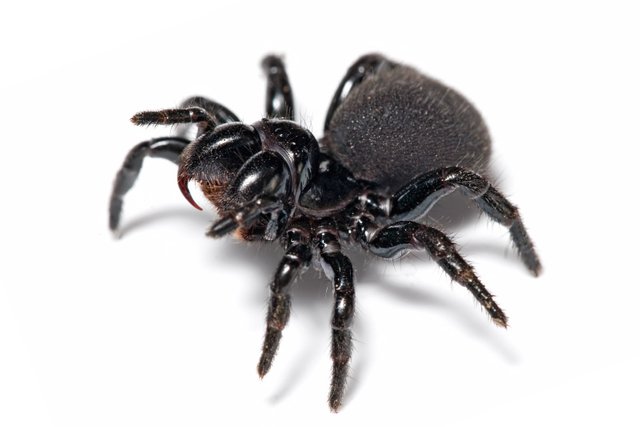
Pinture Credits :commons.wikimedia
The most poisonous spiders are the Australians of the genera Atrax and Hadronyche, [citation needed] about 35 species locally known as funnel spiders, by the shape of the entrances to the tubular networks they manufacture. Primates, including humans, turn out to be exceptionally susceptible to the venom of these spiders, which in other mammals produce mild effects. These are large migalomorphs that produce neurotoxic polypeptides. The incidence of poisoning, which responds well to the antidote, is small and 26 deaths were recorded in Australia before the specific serum was developed in 1981.
There are two groups of small spiders whose venom is less powerful, but because they are more common cause more cases of poisoning. These are the black widows, of the genus Latrodectus, and the "brown spiders", of the genus Loxosceles.
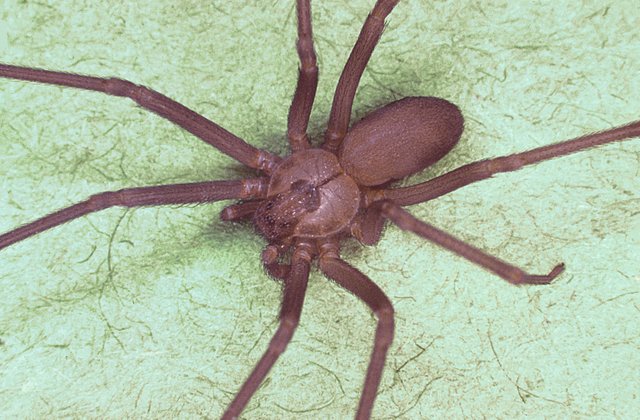
Pinture Credits :commons.wikimedia
The latrodectismo is the intoxication by black widows, species of the cosmopolitan genus Latrodectus (family Theridiidae), whose most notable species are Latrodectus mactans, in North America, L. tredecimguttatus, in the Mediterranean, L. hasselti, in Australia and L. geometricus, in Southern Africa. Spiders of this genre are found in dark corners of all latitudes. The females, larger than the males and more poisonous, devour them during mating. They are not aggressive, but they flee, which makes the bite very circumstantial. There are effective antidotes against this bite. The active substance in the poison that produces the serious effects is a neurotoxic called α-latrotoxin. The local effects appear after a while in the form of pain and extend from 3 to 7 days, but only in a third of the cases there are systemic effects (affecting the body as a whole) and the deaths are very sporadic.
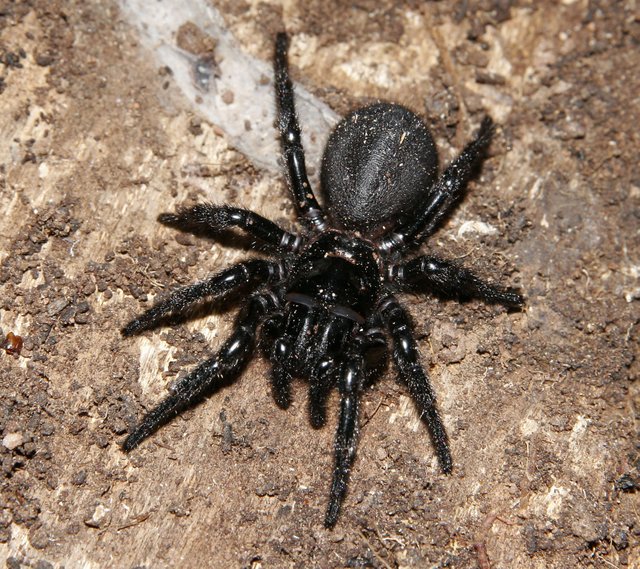
Pinture Credits :commons.wikimedia
The loxoscelism is poisoning by "brown spiders" of the family loxosceles, of which there are many species. These spiders weave disordered networks in corners, also inside houses. They are more active during the night and not aggressive, biting especially when they are trapped between bedding or dresses. The poison of Loxosceles is proteolytic, and produces a local necrosis that can spread and takes time to heal. Systemic effects are only produced very exceptionally and confirmed deaths are very rare, although there are no effective antidotes. Effects of the same type have been observed, but generally milder, in the case of bites by various spiders, such as the tiger spiders of the genus Argiope, the true tarantulas of the Lycosa genus or the small domestic spiders of the genus Tegenaria.
Phoneutria is another genre implicated in serious poisoning, which includes South American spiders of nocturnal, large and aggressive habits that produce a neurotoxic venom. These spiders, popularly called "banana spiders", usually remain on the stems of the banana trees, which can reach other countries traveling as stowaways in the banana trees that some ships carry as merchandise. The symptoms are severe in many cases, but death is an exceptional result.
While most spider bites are painful, but without other harmful consequences, bites by the brown spider or spider violin (Loxosceles species) and other spider types can be life threatening. Try to identify what type of spider the bite has produced; there are specific antidotes for the bites of the widow spider and the solitary brown spider (Loxosceles reclusa).
Bibliography :
- Díaz, J. H. 2004. The global epidemiology, syndromic classification, management, and prevention of spider bites. Am. J. Trop. Med. Hyg., 71: 239-250. (Full text in English)
- The World Spider Catalog
- Rainer F. Foelix 1996. Biology of Spiders. Oxford University Press.
- Marínez-Delclòs, X. (1996). «The fossil record of insects». Bulletin of the Spanish Entomology Association 20 (1-2): 9-30.
- https://web.archive.org/web/20140508035055/http://es.fromquarkstoquasars.com/la-arana-mas-grande-del-mundo/
«Predators of spiders». Spiderworlds.
Principles of internal medicine. Mc Graw Hill. 2000. p. 208 - Selden, P.A., Corronca, J.A. and Hünicken, M.A. (2005). «The true identity of the supposed giant fossil spider Megarachne». Biology Letters (in English) 1: 44-48. doi: 10.1098 / rsbl.2004.0272.
- Jessica E. Garb, Teresa DiMauro, Victoria Vo, Cheryl Y. Hayashi (2006). «Silk Genes Support the Single Origin of Orb Webs». Science (in English).
